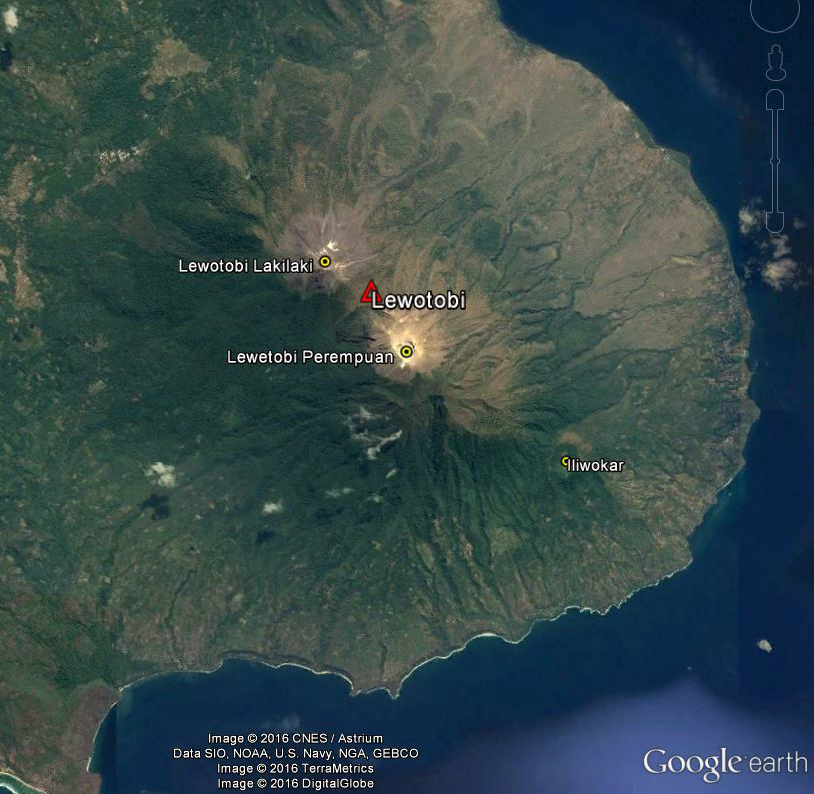Male and female mountains and rivers
« previous post | next post »
"Indonesia Volcano Eruption Sends Ash Soaring 11 Miles High", NYT 7/7/2025:
A volcanic eruption in Indonesia on Monday sent an ash cloud soaring about 11 miles high, far higher than a plume produced by the same volcano when it erupted last month.
Mount Lewotobi Laki-laki, on the southeastern Indonesian island of Flores, spewed the ash when it erupted for about six minutes on Monday morning, the national volcanic agency reported. It erupted several more times later in the day.
That’s a lot of ash: The cloud was nearly four times taller than the three-mile-high one that Mount Lewotobi Laki-laki produced when it erupted last month.
That's also a lot of syllables — eight in the name Lewotobi Laki-laki, nine if we include Mount.
A quick check of the 13,251,059 geographical names at geonames.org turns up plenty that are as long or longer, although we should probably not count organizational names like "Centro de Estudios Superiores Unidad Profesional Interdisciplinaria de Ingeniería y Ciencias Sociales y Administrativas Instituto Politécnico Nacional" or "Edna Bay Volunteer Fire Department and Emergency Medical Services". But that still leaves plenty of things like "Middle Fork North Prong Little Black River" or "Right Hand Prong West Fork Pigeon River" or "Little Mattamiscontis Mountain".
Curiously, "Lewotobi Laki-laki" isn't in the list, although "Sungai Dato Laki-laki" is.
Sungai is Indonesian for "river", and laki is Indonesian for "man", so as discussed in "Lewotobi Laki-laki" (11/8/2024), "Sungai Dato Laki-laki" means something like "male Dato river", and unsurprisingly there is also a "Sungai Dato Perempuan", or "female Dato river".
I'm guessing that the use of "male X" vs. "female X" for mountains and rivers has some kind of metaphorical interpretation — but it's not clear what the metaphor is.
As noted in the earlier post, the male peak of mount Lewotobi is smaller than the female peak, as well as being more active:
The size metaphor might go either way, as in the "mother of all X" idiom, or the fact that in Yoruba drum families, the biggest drum is the "mother drum". But other connections are obviously possible.
So in the first place, can anyone define for us the geographical and linguistic distribution of the "male X" and "female X" naming practice for things like mountains and rivers? And second, what is the figurative meaning of the distinction?

Anon said,
July 8, 2025 @ 8:41 am
Male volcanoes being active (capable of erupting) makes sense…
Roscoe said,
July 8, 2025 @ 8:41 am
Michigan’s Interlochen Arts Camp was built between two lakes with Native American names: Lake Wabakaness on the boys’ side, and Lake Wabakanetta on the girls’ side. I always admired those natives for their foresight…
Brett said,
July 8, 2025 @ 12:57 pm
As to multisyllabic male and female volcanoes, and which one is active—there are Popocatepetl and Ixtaccihuatl in central Mexico. Because of the length of the names, they are normally known as Popo and Ixta. Popo is the man, and according to the myth, when the pair of star-crossed lovers became mountain peaks, he was literally carrying a torch—which is why Popo smokes and Ixta does not.
@Roscoe: It's funny that Interlochen is relatively well known, but the lakes it is inter– are far, far more obscure.
Chris Button said,
July 8, 2025 @ 5:16 pm
I recommend Jim Matisoff's 1992 article The Mother of all Morphemes